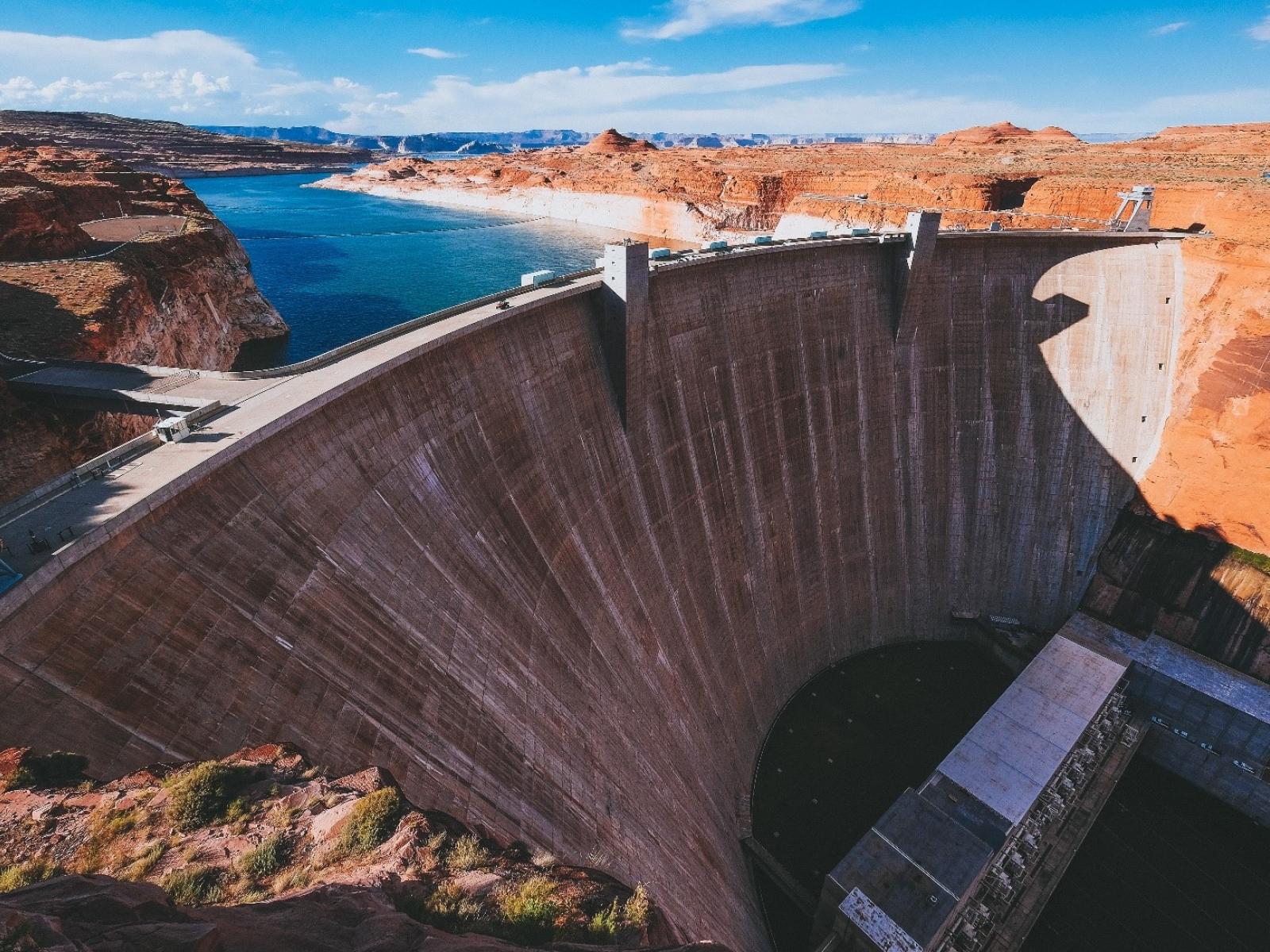Detecting Foresight in the Water Release Decisions of Dams Throughout the U.S.
Study infers that 80% of large U.S. dams respond to inflow forecasts by releasing water

Predicting the flow of water into reservoirs helps water managers mitigate flooding and drought by using dams, such as Arizona’s Glen Canyon Dam.
The Science
Predicting the volume of water that will arrive in a reservoir, known as inflow forecasting, helps water storage operations make water available for agriculture, municipalities, industry, mining activities, and energy throughout dry seasons and during severe drought. However, the science community lacks a systematic understanding of concepts, such as typical forecast lead times adopted and times of year when forecasting is deemed most important. Researchers at the U.S. Department of Energy’s Pacific Northwest National Laboratory are addressing this knowledge gap by studying the nuances in how humans regulate river flows and water availability at hundreds of dams across the United States. This research develops a new, data-driven approach to determine how forecasts inform water release decisions. The study finds inflow forecasts with a lead time greater than one week influence decision making at up to eighty percent of large dams in the United States.
The Impact
This research provides the first set of national-scale estimates of the contribution inflow forecasts make on the seasonally varying release and storage operations of a large sample of dams. These new data will improve estimation of climate impacts on water availability, strengthening the ability to evaluate effects of drought on water-dependent sectors, including agricultural regions and power grids.
Summary
Representing the operation of water infrastructure is critical for understanding the interactions and coevolution of water, energy, and land systems, but data describing how and when forecasts are applied in practice remain undeveloped. This lack of knowledge may prevent hydrological modelers from developing accurate reservoir release schemes for large-scale, distributed hydrology models used to assess drought and seasonal water vulnerabilities of large regions of the United States. The team collected records of inflow, storage, and release for 316 dams across the United States and developed a nuanced reservoir release scheme capable of representing the operator response to prevailing flood or drought conditions. The team then developed horizon, a new tool to parse these records for evidence of foresight in decision making. They found that forecasts influence decision-making across most large dams; this information could be used to better manage water infrastructure management by improving simulations of reservoirs facing drought. This work advances state-of-the-art, large-scale hydrological modeling away from generalized water storage operations to incorporate data-driven release rules tailored to individual dams.
PNNL Contact
Jennie Rice, Pacific Northwest National Laboratory, Jennie.Rice@pnnl.gov
Funding
This research was supported by the Office of Science of the U.S. Department of Energy through the Integrated Multisector, Multiscale Modeling Scientific Focus Area.
Published: August 28, 2020
S. Turner, W. Xu, and N. Voisin, “Inferred inflow forecast horizons guiding reservoir release decisions across the United States.” Hydrology and Earth System Sciences 24, 1275–1291 (2020). [DOI: 10.5194/hess-24-1275-2020].